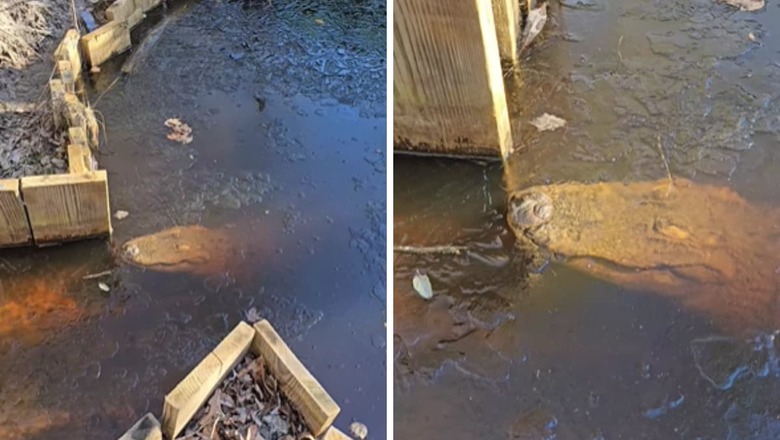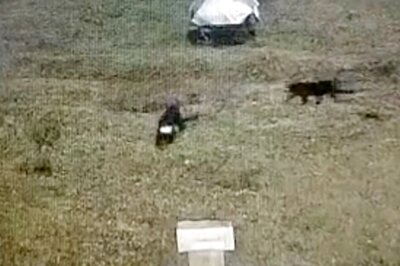
views
The internet has long been captivated by animal videos, showcasing the fascinating behaviours and instincts of creatures from around the world. One such video that has recently gained attention depicts alligators conserving energy in freezing temperatures. The footage, captured at Swamp Park, a tourist attraction and alligator sanctuary near Ocean Isle Beach in North Carolina, showcases an alligator poking its nose through the ice of a frozen pond to avoid suffocation. This captivating display of survival instincts has sparked curiosity and amazement among social media users.
In the video, only the alligator’s snouts and front teeth are visible above the surface of the ice, providing a glimpse into its unique strategy for survival. The alligator appears almost frozen within the giant pond-shaped ice cubes, patiently waiting for the water to thaw. The Swamp Park, known for caring for rescued alligators, shared the clip on Facebook, where it quickly garnered over 2 million views. Users flooded the comments section with inquiries about the duration of the alligator’s survival in such conditions and the reasons behind the sanctuary’s rescue efforts.
The video prompted a range of reactions from social media users, emphasising the awe-inspiring nature of the alligator’s instincts.
One user expressed amazement at the reptile’s instincts, commenting, “Just to have the instincts to know that is AMAZING."
Another user admitted, “That’s cool. I didn’t know that."
A third user added, “Wow, that’s something incredible".
To survive icy winters, alligators enter a state similar to hibernation, known as brumation. Reptiles, being dependent on external heat sources for temperature regulation, utilise brumation to endure cold environments. A study published in the Journal of Experimental Zoology Part B: Molecular and Developmental Evolution explains that during brumation, the alligator’s body becomes lethargic, and both metabolism and body temperature decrease. Unlike hibernating animals, alligators will periodically emerge and move on warmer days.
According to the Texas Parks and Wildlife Department, alligators in Texas typically enter brumation from mid-October until March. During this period, the animals may brumate in dens, but sometimes, they find themselves in water. When the water freezes over, alligators exhibit remarkable behaviour – they use their snouts to create a hole in the ice, allowing them to protrude their nostrils and breathe.




















Comments
0 comment